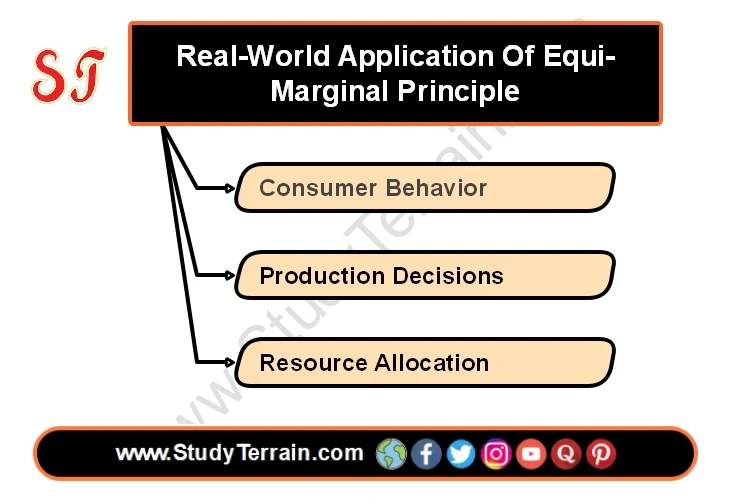In the world of economics, decision-making often involves choosing between various alternatives. The equi-marginal principle, also known as the law of equi-marginal utility, provides a framework for making these choices in a way that maximizes satisfaction or utility. we'll delve into the equi-marginal principle, its significance, and how it guides decision-making.
Table of content (toc)
Understanding the Equi-Marginal Principle
The equi-marginal principle is based on the idea that individuals allocate their resources in such a way that the marginal utility per dollar (or per unit) spent is equal across all options. In simpler terms, it suggests that people distribute their resources to different activities until the marginal benefit from each activity is the same.
How Equi-Marginal Principle Works
Imagine you have a certain amount of money to spend on two goods: A and B. According to the equi-marginal principle, you will allocate your budget in a way that the additional utility (satisfaction) gained from spending one more dollar on good A is equal to the additional utility gained from spending one more dollar on good B.
Example
let's say you have $10 to spend, and you're considering buying burgers and pizzas. The marginal utility of each additional dollar spent on burgers and pizzas is as follows:
Burgers
The first burger gives you a high level of satisfaction (10 utils), but as you eat more burgers, the additional satisfaction you get decreases (8, 6, 4, 2 utils).
Pizzas
The first pizza also gives you a high level of satisfaction (12 utils), but like with burgers, the additional satisfaction decreases as you consume more pizzas (10, 8, 6, 4 utils).
Given this scenario, you'll allocate your $10 in such a way that the marginal utility per dollar spent on burgers equals the marginal utility per dollar spent on pizzas.
If, for example, spending $2 on burgers gives you 6 utils and spending $2 on pizzas gives you 8 utils, you would continue reallocating your budget until the marginal utility per dollar is equal for both goods.
Real-World Application Of Equi-Marginal Principle
The equi-marginal principle finds application in various real-world scenarios:
 |
| Real-World Application Of Equi-Marginal Principle |
Consumer Behavior
Consumers use this principle when making purchasing decisions. For instance, when choosing between different brands of smartphones, they compare the marginal utility (value) they get from each option.
Production Decisions
Businesses apply this principle to determine the optimal combination of inputs (such as labor and capital) to maximize output. They allocate resources to different production processes until the marginal product per dollar spent is equal across all inputs.
Resource Allocation
Governments and policymakers use the equi-marginal principle when allocating resources such as funds for healthcare, education, and infrastructure. They aim to distribute resources in a way that maximizes social welfare.
Importance of the Equi-Marginal Principle
The equi-marginal principle is crucial for several reasons:
 |
| Importance of the Equi-Marginal Principle |
Optimization
It helps individuals and businesses allocate resources efficiently, maximizing overall satisfaction or utility.
Consumer Welfare
By guiding consumer choices, it ensures that resources are allocated to their most valued uses, leading to increased consumer welfare.
Production Efficiency
It ensures that resources are utilized efficiently in production processes, leading to higher output levels.
Policy Formulation
Governments use this principle to design policies that promote equitable distribution of resources and maximize social welfare.
Conclusion
The equi-marginal principle provides a simple yet powerful framework for decision-making, guiding individuals, businesses, and policymakers in allocating resources to maximize satisfaction or utility. By balancing choices based on marginal utility, we can make more informed decisions that lead to greater overall well-being. Embracing the equi-marginal principle isn't just about finding the perfect balance—it's about achieving the highest level of satisfaction from the resources available.
For more content visit KMBN 102



